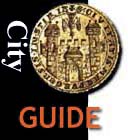![]() Maribor - Vurberk - Ptuj
Maribor - Vurberk - Ptuj
We will go by the old road between Maribor and Ptuj, through Malecnik, Duplek and Dvorjane, where the road turns upwards, to the settlement of Vurberk. At the ridge view over the Drava, there is a splendid view over the Drava Valley and to the eastern Pohorje slopes. In the vicinity, ruins of the Vurberk Castle, known already to have existed by 1238, are located. The original Castle was destroyed by the Czech king Otokar II, after which its Ptuj owners built a new one. Until 1945, the Stubenbergs, Attems and finally the Herhersteins, owners of the Ptuj Castle, lived here. In 1945, allied bombings caused great damage, thus that today only the peripheral part of the Castle area with a small Gothic tower and a renaissance entrance portal remains. In the vicinity, there is an Our Lady's Church from 1336, which was renovated in the XVIII century. Two figurally carved Roman stones have been lbuilt into the Church. The Roman Poetovium water supply had once started from Vurberk.
We continue along the road, which turns downwards toward the Grajene creek. To the left, on the sunny side, the view towards the vineyards slowly opens. At the near by Mestni vrh (hill) excellent white wines are produced. After the village of Grajena we already have a view towards Ptuj, over which Ptuj Castle dominates. In such a short paragraph, it is, of course, not possible to mention all the points of reference of this oldest Slovenian town. Already in pre-historic times, a crossing of the Drava existed at this point. The wider area of Ptuj has been settled since the Neolithic period. Upon the arrival of the Romans, a Roman settlement was established here. It is mentioned as Poetovio firstly in Tacitus' texts in 69 AD. After the disappearance of the Roman Empire, the town was raided in the V century by Goths and Huns. Slavs established a smaller settlement at this site in the VI century. In the X and XI century the town was stricken by Hun raids. With the construction of Ptuj Castle in the XII century civil construction in the town becomes livelier. St. George's collegiate Church dates back do the XII century. As well as that, the city acquired a Dominican and a Minorite Monastery in the XIII century. In 1376 Ptuj acquired city Statute (Charter). Qith the walls and the bridge over the Drava, Ptuj achieved a full rounded appearance. Because of Turkish raids, the Csstle had an express defence role with bastilles. After World War II, the Castle was nationalised. The Ptuj Provincial Museum is located in it, with an exceptionally rich cultural-historical, ethnographic and gallery collection.

